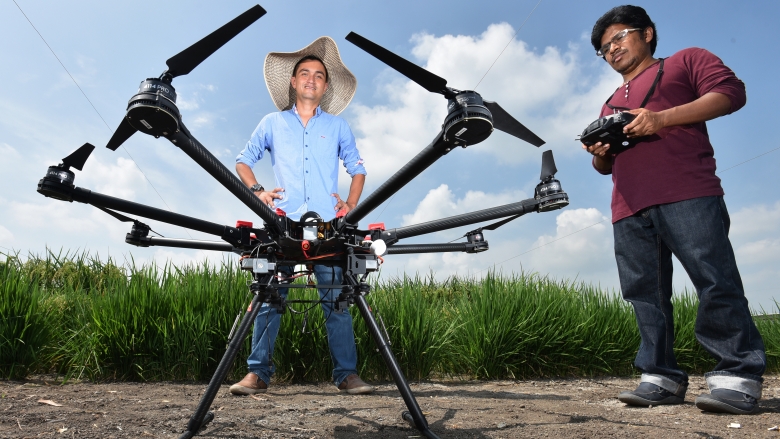The world is today facing the pressing challenge of unsustainable food production and consumption practices. Today’s food system is the main driver of deforestation and biodiversity loss and generates a quarter of the greenhouse gas pollution globally.
What’s more, the world’s roughly 500 million smallholder farmers who contribute 80 percent of our food are amongst the poorest and most malnourished groups. In fact, climate change could force over 100 million people into extreme poverty by 2030, mostly through impacts on agriculture and food security.
Hence, improving the performance of the food system is critical if we are to sustainably feed nearly 10 billion people by 2050 while raising farmer incomes, protecting them from climate change and helping them to thrive.
Breakthrough digital technologies have the potential to deliver significant positive impacts across food value chains. These range from innovations that can make food systems more resource-efficient and climate-resilient such as precision agriculture, gene-editing and biological-based crop protection, or technologies that improve traceability from farm to fork.
Harnessing Digital Technologies to Improve Food System Outcomes looks at the opportunities from digital technologies, including better transparency of agricultural value chains, smarter farms, and improved public services. It also reviews some of the risks, including an over-concentration of service providers, poor data governance, and exclusion. The report presents a set of potential entry points for public sector action to seize the opportunities that expanding rural network coverage can bring.
Main Messages
- Digital technologies can significantly reduce the costs of linking sellers and buyers; reduce inequalities in access to information, knowledge, technologies and markets; help farmers make more precise decisions on resource management by providing, processing, and analyzing an increasing amount of data faster; and potentially reduce scale economies in agriculture, thereby making small-scale producers more competitive.
- A range of digital technologies in the food system are already leading to better informed and engaged consumers and producers, smarter farms and improved public services. These technologies range from simple off-line farmer advisory digital videos to complex systems such as distributed ledger technologies for value chain traceability and some forms of precision agriculture.
- Adoption of digital technologies varies significantly across countries, with lower current adoption rates in low-income countries. Increasing its adoption in the food system will require addressing supply side factors such as low rural network coverage and availability of digital application; and demand side factors, including need for better skills and knowledge, trust, affordability, and the absence of complementary investments.
- While digital technologies have significant potential they also pose several risks, including an over-concentration of service providers; lack of data privacy; exclusion and potential job losses for some activities; and cyber security breaches. What’s needed are to: keep service provider entry barriers low; ensure good data governance; targeted support to smallholder farmers, youth, women, and other vulnerable groups; and support skill development.
- Digital technologies should not be viewed as a panacea even while they offer significant opportunities. Other investments such as better roads, uninterrupted electricity, post-harvest storage facilities, and better logistics linking farmers to markets are equally important. Better investment climate and government policies will in turn increase demand for digital technologies.

